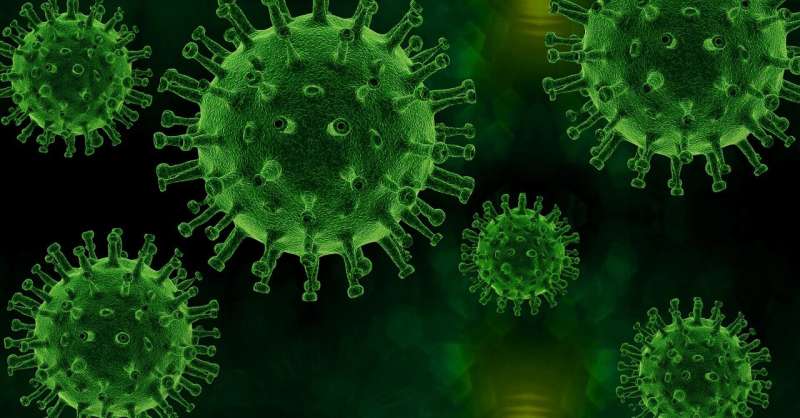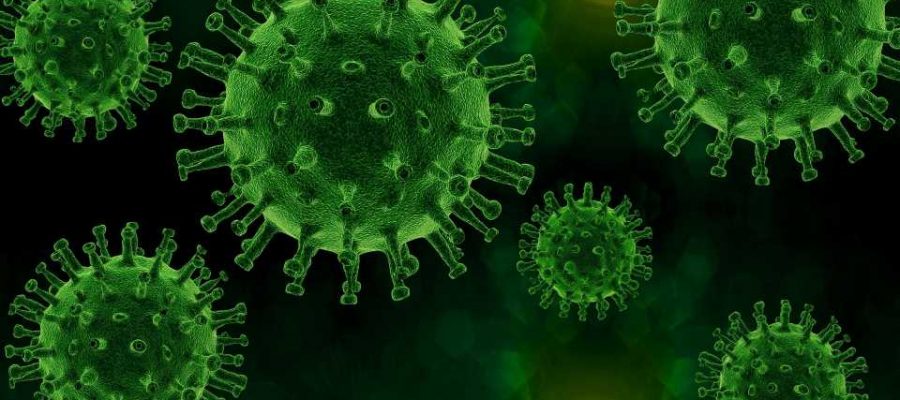
There have been enough COVID infections in the UK since March 2020 for every person to have been infected between 1.3 and two times, according to mathematical modeling.
Of course, some people will have had COVID more than twice, and some won’t have had it at all. But COVID is not a “one and done” disease, and any ideas of eliminating it are now unrealistic.
There is however an increasingly pervasive narrative which suggests we shouldn’t bother to mitigate against COVID, apart from through vaccination, because infection (and reinfection) is supposedly inevitable—and even useful for topping up immunity.
But counter to this somewhat fatalistic perspective, multilayered mitigation measures alongside vaccination have shown the potential to reduce COVID spread. These measures, such as purifying the air in closed spaces and destroying the virus with a type of UV light, are sustainable and not restrictive. The result could be fewer infections overall and a longer time, on average, between infections.
Infections are not risk free
The “no point delaying infection” argument falls down in a number of places.
First, even after vaccination, some people remain vulnerable to becoming severely ill or dying from COVID. While infection risk remains high, clinically vulnerable people who don’t mount a good immune response to the vaccine can’t enjoy the same freedoms as those who do.
Second, although both vaccination and previous infection reduce the risk of long COVID upon subsequent infection, they don’t eliminate this risk.
Third, a recent study showed that each subsequent COVID infection adds further risk of death and other serious adverse events (such as stroke, heart attacks, neurological disorders and diabetes) in the year following reinfection. So, while a reinfection tends to be less serious than the first infection, it’s always worse to have been infected twice rather than just once.
Better treatments and vaccines on the horizon
The majority of UK adults have had at least two doses of vaccine. The days when hospitals were overwhelmed with COVID patients and thousands were dying each day are almost certainly behind us. So what difference does it make if you get infected now, or in a year, or in two years?
The difference is that we’re continually getting better at dealing with COVID. New treatments are being approved regularly and there are literally hundreds of ongoing trials for vaccines that are better targeted to newer COVID variants, or able to protect against any variant, or even which potentially prevent transmission completely.
Other protections too are improving. Far-UV is a type of light that efficiently inactivates microbes but, unlike regular UV light, doesn’t harm exposed skin. A recent preliminary study showed that far-UV light sources have the potential to safely kill almost all virus particles in indoor air within minutes.
So the longer you can delay exposure to COVID, the more likely an exposure won’t result in infection due to improved vaccines or mitigation measures, and the more likely there will be a better treatment available if you do become infected.
Some worry that delaying infections and reducing their overall number could increase susceptibility in the population leading to bigger, more severe waves. But these arguments implicitly assume that infection is the optimal—or indeed the only—way to build or maintain immunity.
While it remains important to maintain high levels of immunity in the population, vaccination presents an alternative way to top up immunity at much lower risk to the individual.
Unfortunately, the current vaccination strategy in the UK means that large swathes of the population haven’t had their immunity boosted by a vaccine dose for almost a year. There’s a strong argument for providing booster vaccines to these groups.
Sustainable mitigation measures have broader benefits
Many studies have now shown that providing cleaner air in public spaces (for example, in schools and on public transport) can reduce the risk of COVID infections.
While people might still be exposed elsewhere, for many, traveling to and attending school or work are among the riskiest activities they undertake, not least because they spend a lot of time in those places. For these people, reducing the likelihood of transmission in these settings would significantly reduce their overall risk.
Cleaner air also has benefits beyond the COVID pandemic, including reducing the burden of other airborne pathogens such as colds, RSV and flu, which are currently putting pressure on healthcare systems in many countries.
Even before the pandemic, the UK’s Royal College of Paediatrics had called for the improvement of indoor air in schools and homes. The Royal Academy of Engineering estimated the economic benefits of improving ventilation alone in commercial, industrial and community settings could outweigh the costs by some margin—potentially £174 billion saved over 60 years.
During periods of high transmission, masks also represent an important tool to reduce transmission and are effective against a range of airborne viruses.
Broader societal measures such as improving housing quality, access to green spaces and sick pay, and reducing health inequalities, all represent sustainable mitigation strategies as well as being public goods more broadly. These have long been stated priorities of UK governments but there hasn’t been significant progress in implementing them.
Preparing for the next pandemic
One crucial benefit to many of these measures is that they will be effective not only against any COVID variant, but against any new airborne pandemic.
In 2020, our lack of pandemic preparedness let us down badly. Implementing these measures now will increase our preparedness for the next pandemic, and improve our health in the meantime.
Provided by
The Conversation
This article is republished from The Conversation under a Creative Commons license. Read the original article.
Source: Read Full Article
